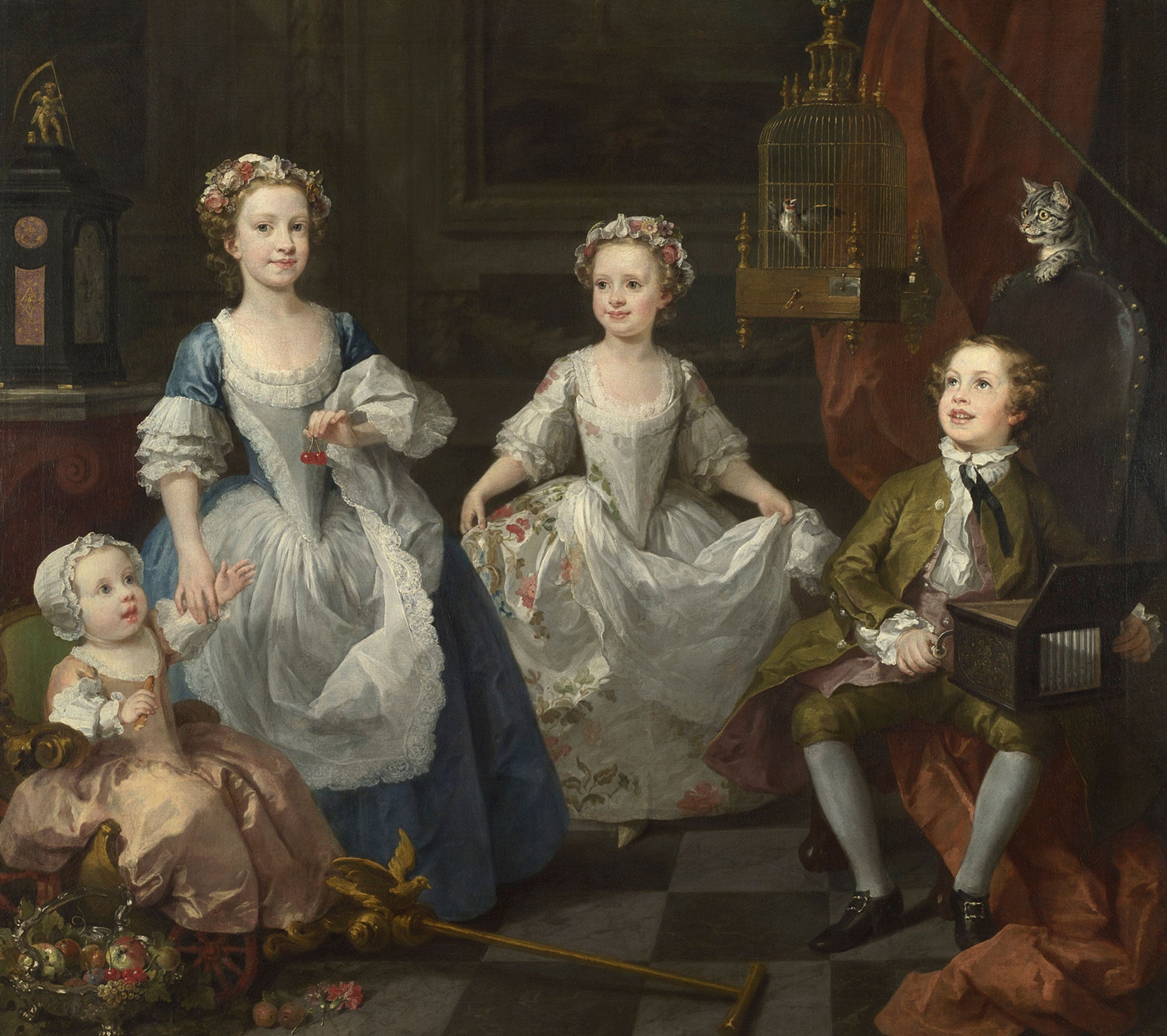Great works: The Graham Children (1742) by William Hogarth
National Gallery, London

Your support helps us to tell the story
From reproductive rights to climate change to Big Tech, The Independent is on the ground when the story is developing. Whether it's investigating the financials of Elon Musk's pro-Trump PAC or producing our latest documentary, 'The A Word', which shines a light on the American women fighting for reproductive rights, we know how important it is to parse out the facts from the messaging.
At such a critical moment in US history, we need reporters on the ground. Your donation allows us to keep sending journalists to speak to both sides of the story.
The Independent is trusted by Americans across the entire political spectrum. And unlike many other quality news outlets, we choose not to lock Americans out of our reporting and analysis with paywalls. We believe quality journalism should be available to everyone, paid for by those who can afford it.
Your support makes all the difference.A strange celebration that is also, perhaps, at least in part, not a celebration. This group portrait of the Graham children – their father was George II's apothecary - freezes the blood even as it pleases. And perhaps teases, somewhat ghoulishly. Its title seems blameless enough, blandly descriptive as it is. And yet, in the light of all that we know and see here, it also seems to brood ominously over those gentle, childish smiles.
The children themselves are perfectly – if not grandly – poised in this act of self-presentation, skirts or knees spread, in a mood of slightly understated contentment. And yet we feel that there is precious little genuine vitality here – or, if there is, it is of a painted, porcelain variety, rather unconvincing and somewhat manufactured. What is more, we are not profoundly convinced that the children are really linked in any way, by blood, friendship or tender feeling.
The painting's mood seems so evanescent, so tenuous. Each one seems like an entire, complete individual portrait of a ghostly semblance of a child, sufficient unto itself. In spite of the fact that the eldest holds the hand of her little brother, they show no evident tenderness for one another. Each one looks like a beautiful cut out, dropped into a pre-existing scene of slightly ominous domestic harmony.
Wherein lies that ominousness though? The symbolism of the details weigh heavy upon us. There is, for example, the bird cage at which happy Richard Graham, playing his little organ, glances up, pleasingly, momentarily, diverted. What he does not see is that at his back a tremendously bead-eyed cat, paw about to ramp its body up onto the top of the chair's back, seems about to snuff out the bird's life. In fact, it seems so eager to do so that this animal's vitality makes it the only truly pulsing thing in this entire painting. Everything else is slightly abstracted, slightly posthumous in feel.
And, in part at least, this is in fact a tribute to the dead. The youngest child – little, bonneted and be-skirted Thomas in his pretty pram – had died even before Hogarth finished the painting. See how the pram's wooden handle has fallen to the ground, as if giving up the ghost. It is as if Hogarth wants us to know, none too subtly, that death is everywhere in this picture, that the enduring frozen sweetness of this scene is also a profoundly melancholy one.
There are even more pointed references to death. Raised up behind (and to the left of) the head of the eldest child stands a small golden figure of cupid holding a scythe, symbol of death, and beside Cupid, an even smaller hour glass, through which the sands of time sift, remorselessly. Then there are those shiny apples in front of Thomas. They too will pass away.
And it all takes place inside an interior of such perfectly protective and seemingly prosperous bourgeois respectability that we can scarcely credit that death will pass through this door, too. Albeit on a small scale, and even gilded, and borne proudly, like a kind of fluttering pennant, by the god of love.
About the artist: William Hogarth (1697-1764)
Born in Bartholomew Close, London, William Hogarth was the son of an impoverished teacher of Latin who spent time in the Fleet Prison for debt, and founded a coffee house at St John's Gate where only Latin was spoken. It was a commercial failure. A Freemason, William married Jane Thornhill in 1729, the daughter of Sir James Thornhill, also an artist. The childless couple fostered foundling children, and took a keen interest in the affairs of Captain Coram's Foundling Hospital.
Join our commenting forum
Join thought-provoking conversations, follow other Independent readers and see their replies
Comments